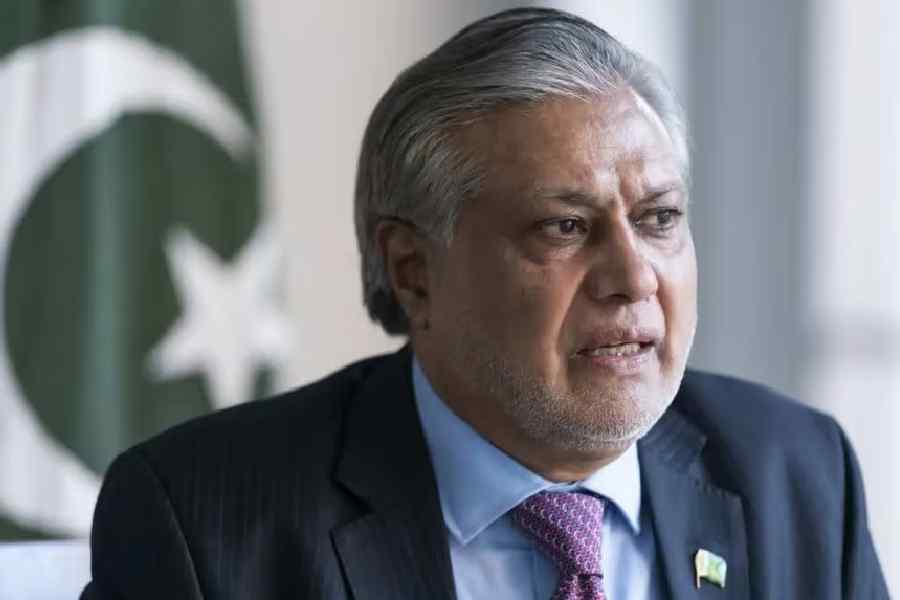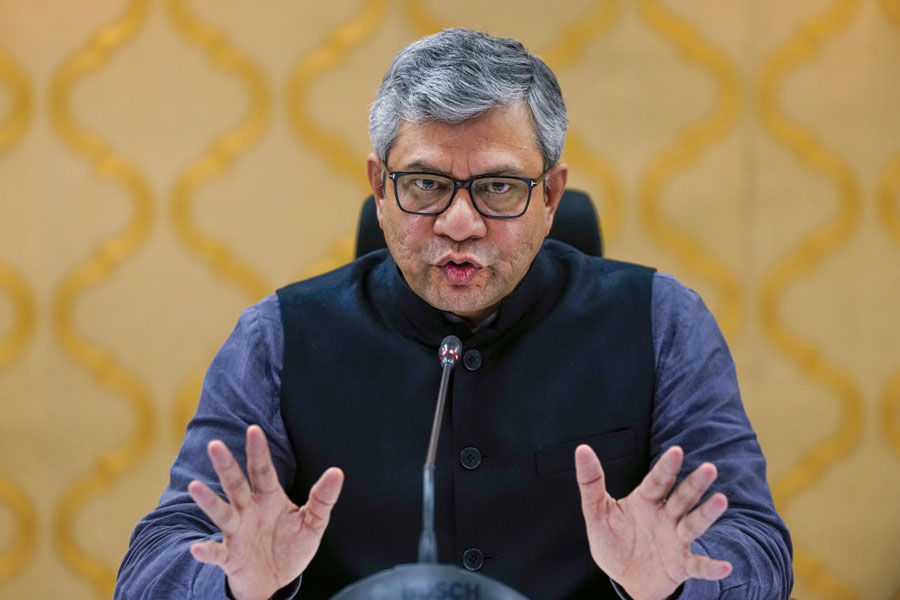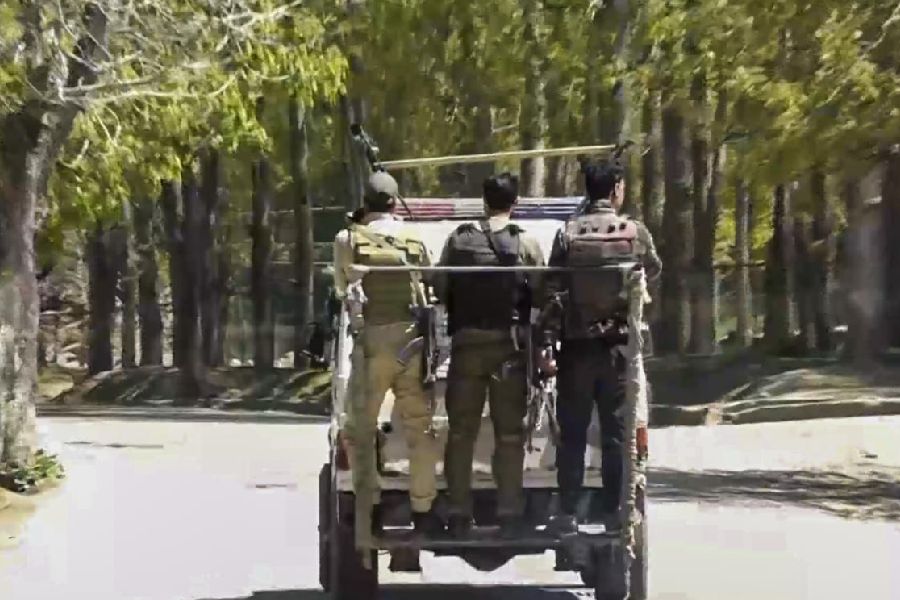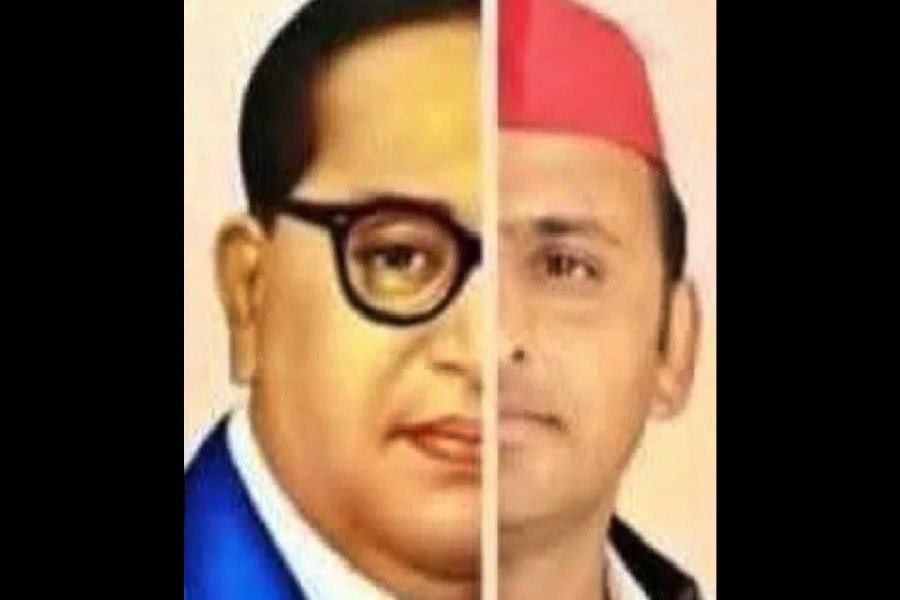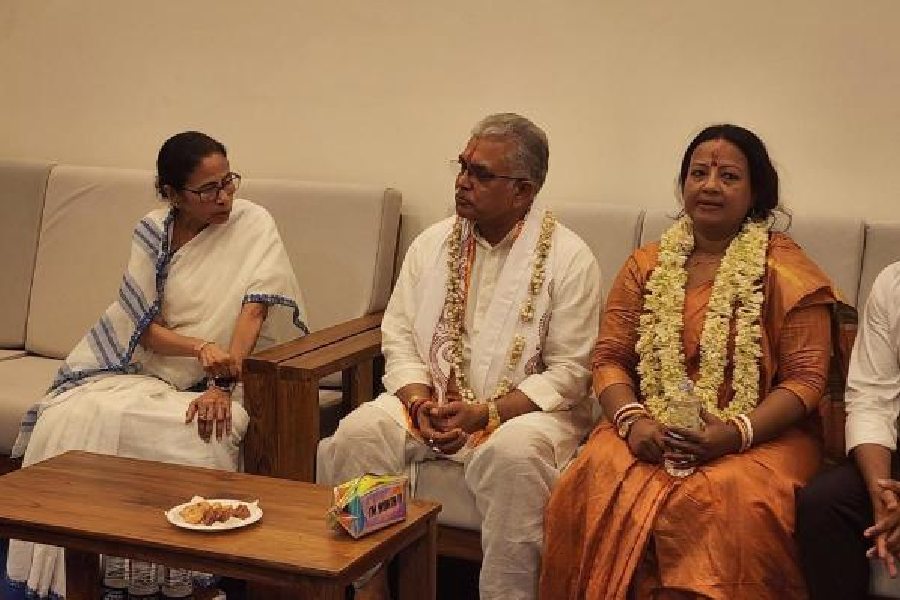 |
| Deputy Indian high commissioner Ranjan Mathai (second from right) and Monika Kapil Mohta, culture minister attached to the mission, hold one of the statues with British officials. Telegraph picture |
London, Dec. 15: The government of India will have to decide whether to prosecute the dealer who sought to smuggle six ancient religious statues which were seized by Heathrow customs in August last year and returned yesterday to India.
The statues, which originate from Bihar and Orissa and were dated by the British Museum between the 7th and 11th centuries AD, weighed 172 kg and were packed in crates “mis-described” as modern “home decoration” of “low value”.
The consignment was opened by a sharp-eyed officer from HM Revenue & Customs and taken to the British Museum where it took Michael Willis, curator of the Ancient Indian and Himalayan Collections, just “one glance” to identify the statues as ancient treasures.
Willis identified the statues, which measure between 50cm and 150cm in height, as follows: A 7th century figure of a goddess, possibly Indrani; two 10th century figures of Buddha; a 10th century figure of a goddess, probably Durga; an 11th century figure of the Hindu and Vedic god Agni; and an 11th century figure of a temple devotee whose head is missing.
HM Revenue & Customs has decided not to prosecute the person to whom the crates were addressed, while the sender, it is understood, came up with the fiction that the objects “were just lying around in my hotel”.
This instance of smuggling provides an insight into how objects stolen from places such as the museum in Calcutta or in Santiniketan find their way to private collectors in the West who are willing to pay thousands of pounds to feed their “art addiction”.
Experts have no doubt that there is an established smugglers’ network in India, though museums and reputable galleries in the West “will not touch” any art object that left India after 1970 without provenance documents.
In any case, anything over 100 years old or with an historical value cannot be exported legally from India.
This particular case of attempted smuggling ended happily with the British Museum restoring the statues gratis “out of the goodness of its heart”, storing them safely and formally handing over to Ranjan Mathai, deputy Indian high commissioner, and to Monika Kapil Mohta, one of India’s new breed of glamorous women diplomats who has just replaced Atul Khare as director of the Nehru Centre in London.
Gone are the days when British colonial rulers brought back loot from all over the world and especially India. The new Britain, which believes earnestly that treasures should remain in their countries of origin, actively seeks to promote the “Unesco Convention on the Means of Prohibiting and Preventing the Illicit Import, Export and Transfer of Ownership of Cultural Property in 2002”.
On December 30, 2003, the Dealing in Cultural Objects (Offences) Act came into force, which made it an offence to import or export illegally excavated material — many smuggled items have been coming out lately from Iran, Iraq, Afghanistan and other war-affected countries.
Present at yesterday’s handover was a government minister, John Healey, financial secretary to the treasury, who said: “I am pleased to announce the return of these historical statues to the Indian people. The government fully recognises the importance of historical artefacts to our shared cultural heritage and takes its role in enforcing international agreements and prohibitions designed to preserve our historic environment very seriously.”
Willis told The Telegraph that in western society there was now a tendency to look down on art collectors who raided the cultural heritage of other countries. “There is greater sensitivity in the West. People in India are also much more aware. With the economic rise of India and China, these are no longer passive cultures.”
Mohta, who said the statues will be sent to the Archaeological Survey of India to decide their ultimate destination, revealed that the Indian high commission was first informed of the seizure on October 5 last year — days after the crates were intercepted at Heathrow.
Mohta, who expressed the Indian government’s gratitude to the British Museum and to the HM Revenue & Customs, found it difficult to put a financial value on the statues. “They are priceless. The Unesco protocol is about how countries can come together to combat these crimes. These are crimes against civilisation and cultures.”


